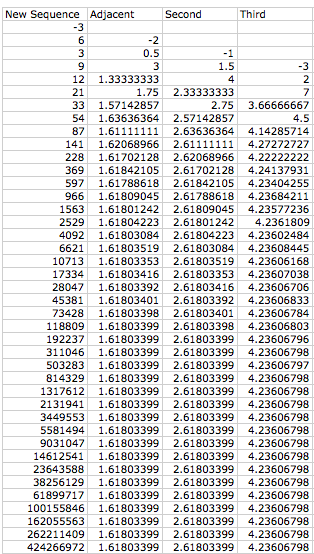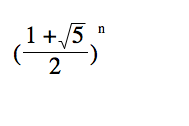The Fibonacci Sequence
By: Lacy Gainey
The Fibonacci Sequence can be generated by, f(n) = f(n-1) + f(n-2).
We can determine f(n) if we are given the two pervious terms, f(n - 1) & f(n - 2).
f(n) is the sum of these two terms.
Use excel to generate the Fibonacci Sequence, starting with f(0)=1 and f(1) = 1.

Use excel to construct the ratio of each pair of adjacent terms in the Fibonacci Sequence. Do the same for every second term and every third term.
What observations do you make?

First, lets look at the column that contains the ratios of adjacent terms. As n increases, f(n) is getting closer and closer to 1.618.
1.618 or  is known as the Golden Ratio.
is known as the Golden Ratio.
Looking at the column that contains the ratios of all the second terms, we see that f(n) is approaching 2.618 as n is increasing.

The third column, which contains the ratios of all the third terms, is approaching  as n increases.
as n increases.
Lets repeat the same process, but this time starting with f(0) = 1 and f (1) = 3. This is called the Lucas Sequence.

Once again, the columns approach  ,
,  , &
, &  .
.
Lets see if this holds for other arbitrary integers.
I decided to start with f(0) = -3 and f(1) = 6.

Again, the ratios converge on powers of the golden ratio.
We can conclude that the ratio of every nth term converges to  .
.


is known as the Golden Ratio.
as n increases.
,
, &
.
.